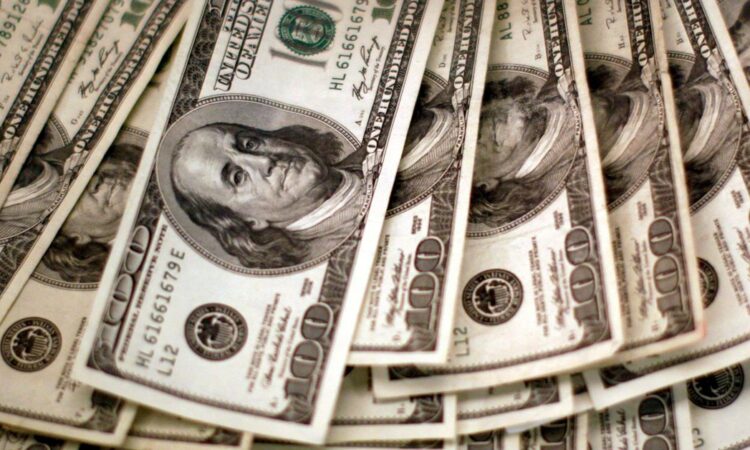

U.S. dollars are counted out by a banker counting currency at a bank in Westminster, Colorado November 3, 2009. REUTERS/Rick Wilking/File Photo
LONDON/SINGAPORE, Aug 7 (Reuters) – The dollar rose on Monday after a mixed U.S. jobs report on Friday sent the U.S. currency to a one-week low, with market focus turning to inflation data from the world’s two largest economies due this week.
The euro weakened after data on Monday showed German industrial production dropped more strongly than forecast in June, underlining the challenges faced by the manufacturing sector amid a downturn in Europe’s largest economy.
The dollar recovered from a one-week low hit on Friday in the aftermath of the data showing the U.S. economy added fewer jobs than expected in July, with its daily losses limited by signs of solid wage gains and a decline in the unemployment rate.
That suggested the Federal Reserve may need to keep rates higher for longer.
The U.S. dollar index , measuring the greenback against a basket of other major currencies, was last 0.25% higher at 102.31, moving away from Friday’s low of 101.73.
U.S. inflation data is due on Thursday, where expectations are for core inflation of 4.7% on an annual basis in July.
“We are seeing a cooling of the labour market, but it’s not collapsing. It’s doing what we hoped it would do,” said Pepperstone’s Head of Research Chris Weston.
“It’s hard to see the pullback being big across the dollar pairs, because fundamentally the U.S. has still got the best growth, you (have) a central bank which is still very much data dependant,” said Weston.
“I think there are risks this week that the CPI number comes out above expectations.”
Against the dollar, the euro fell 0.34% to $1.0975, marching towards a one-month low.
“This morning’s… weaker than expected Germany industrial production data is a reminder of the headwinds facing the euro zone economy and the possibility that ECB (European Central Bank) rates may have already peaked,” said Jane Foley, head of FX strategy at Rabobank.
Also due this week is China’s July inflation print on Wednesday, with traders on the lookout for further signs of deflation in the world’s second-largest economy.
MUFG analysts said in a note that they expected the country’s headline CPI to register deflation after growth in consumer prices stalled in June.
“While the narrative of soft recovery in China likely remains intact in the short term, continued support from the Chinese government should boost the yuan.”
The Chinese yuan hovered near a two-week low, with its offshore counterpart last 0.2% lower at 7.2012 per dollar.
On Friday a Chinese official said liquidity in the country’s banking system would be kept reasonably ample, though investors were left wanting for more amid Beijing’s slow roll out of support to revive its economy.
The yen fell 0.44% to 142.38 per dollar after hitting a one-week high of 141.52 per dollar in Asia trade.
The Bank of Japan debated growing prospects of sustained inflation at their July meeting with one board member saying wages and prices could keep rising at a pace “not seen in the past”, according to a summary of opinions released on Monday.
Elsewhere, sterling fell 0.15% to $1.2732, moving towards a one-month low touched on Thursday after the Bank of England raised interest rates by 25 basis points to a 15-year peak of 5.25%.
It was the BoE’s 14th back-to-back increase, but a step down in the pace of monetary tightening after rising by 50 bps in its previous meeting.
Reporting by Joice Alves in London and Rae Wee in Singapore; Editing by Jan Harvey, Kirsten Donovan
Our Standards: The Thomson Reuters Trust Principles.





